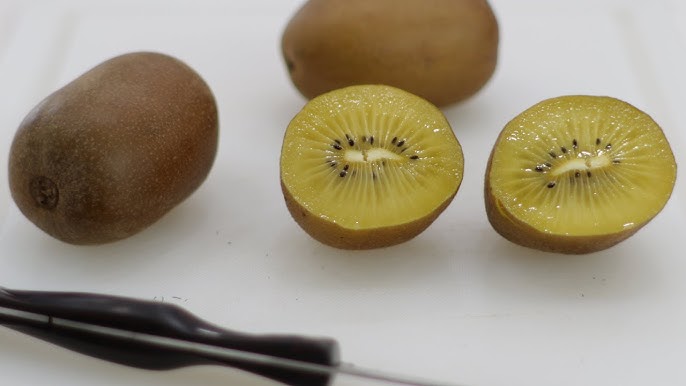Discovering the Special Features and Fascinating Biology of Kiwi: A Comprehensive Study
Welcome to the fascinating world of kiwi! Prepare to be astonished as we discover just how kiwis have adapted to their flightless presence and find their ecological significance.
Physical Attributes
What are the physical characteristics of a kiwi bird? The kiwi bird is a tiny, flightless bird indigenous to New Zealand. One of the most unique features of the kiwi bird is its long, slim bill.
The kiwi bird has an unique quill, with soft, hair-like plumes that look like fur. These feathers are normally brown or grey in color, helping the bird assimilate with its forested habitat. Unlike a lot of birds, the kiwi has tiny wings that are hidden below its feathers and are not functional for flying. Rather, it counts on its solid legs and effective claws for movement.
One more interesting physical characteristic of the kiwi bird is its nostrils located at the pointer of its costs. This adjustment allows them to ferret out worms and pests, their key resource of food, in the ground cover on the woodland flooring (what do kiwis taste like). Furthermore, the kiwi bird has large, rounded eyes that are adapted for low-light problems, as they are primarily nocturnal
Feeding Habits
To understand the feeding behaviors of the kiwi bird, you require to observe its foraging behavior and nutritional preferences. Kiwis are unique in their feeding behaviors, as they are mostly nocturnal and count heavily on their feeling of odor to locate food. They have a long, slim expense that permits them to probe the ground searching for insects, worms, and various other invertebrates. These birds use their solid sense of scent to find prey concealed below the surface, and after that use their expense to extract it.
In addition to bugs, kiwis additionally consume seeds, berries, and fruits. Kiwis have been observed feeding on a large selection of plant varieties, suggesting their flexibility to different food resources.
Interestingly, kiwis do not have a plant, which is a specific component of the gastrointestinal system located in lots of birds. Rather, their food passes directly from the esophagus to the stomach. This might be an outcome of their unique evolutionary background and eco-friendly niche.
Reproduction and Breeding
Currently let's delve into the remarkable globe of kiwi recreation and reproduction, building upon our previous exploration of their one-of-a-kind feeding behaviors. They are virginal birds, indicating they develop long-term sets.
During this time, the women kiwi will certainly lay one to two eggs, which are abnormally big contrasted to the bird's body size. Kiwi eggs are the largest of any type of bird in proportion to body weight.
As soon as the chicks hatch out, they are birthed able and totally feathered to see (what do kiwis taste like). They are also rather precocious, suggesting they are able to take treatment of themselves fairly quickly. Nevertheless, even after the chicks have hatched out, the parents proceed to supply care and security for them till they are completely independent, which can take several months.

Adjustments to Flightless Existence
Throughout their transformative history, kiwis have established amazing adjustments for their flightless presence. As a flightless bird, the kiwi has actually undergone a number of adjustments to its anatomy and habits that permit it to flourish in its unique setting. Among the most obvious adjustments is its wing framework. Unlike other birds, kiwis have small, vestigial wings that are virtually worthless for flying. Rather, these wings like it have developed into powerful appendages that aid in equilibrium and security, allowing the kiwi to navigate its forest floor environment with convenience.
An additional adaptation that kiwis have actually established is their strong legs and feet. The kiwi's legs are located and muscular much back on its body, providing it with a reduced facility of gravity and optimal equilibrium.
In order to make it through without the ability to fly, kiwis have actually also created a keen feeling of odor. Their long, slim beaks residence very delicate nostrils, allowing them to spot pests and worms below the woodland floor. This click to investigate exceptional adaptation assists kiwis situate food sources and keep a balanced diet plan.
Ecological Importance
The ecological value of kiwi lies in their function as key seed dispersers in their indigenous environment. As they move via the forest flooring, kiwi forage for insects, worms, and a range of plants.
The kiwi's capacity to disperse seeds is critical for preserving the biodiversity and balance of their community. By spreading seeds across various locations, they contribute to the growth and wealth of various plant varieties. Subsequently, these plants provide food and sanctuary for other pets, creating a web of interdependencies within the ecological community.
Furthermore, kiwi play an important function in controlling the population of specific plant types (what do kiwis taste like). Some plants create an extreme number of seeds, which can result in overcrowding and limited resources for various other plants. By eating and spreading these seeds, kiwi aid manage the development of such plants, making certain a much healthier and extra varied ecosystem
The ecological significance of kiwi expands past their duty as seed dispersers. Their tunneling habits also adds to dirt aeration and nutrient recycling, improving the overall wellness of the woodland floor. Additionally, their feeding habits can aid manage insect populations, decreasing the threat of parasite break outs that could harm plant life.
Final Thought
To conclude, exploring the one-of-a-kind features and interesting biology of kiwi reveals its physical features, feeding routines, reproduction and reproducing patterns, in addition to its adaptations to a flightless presence. With its unique functions and ecological relevance, the kiwi functions as an amazing instance of nature's diversity and adjustment. By comprehending and valuing the kiwi's role in its straight from the source ecological community, we can even more advertise conservation initiatives to guarantee the conservation of this amazing varieties for future generations.
